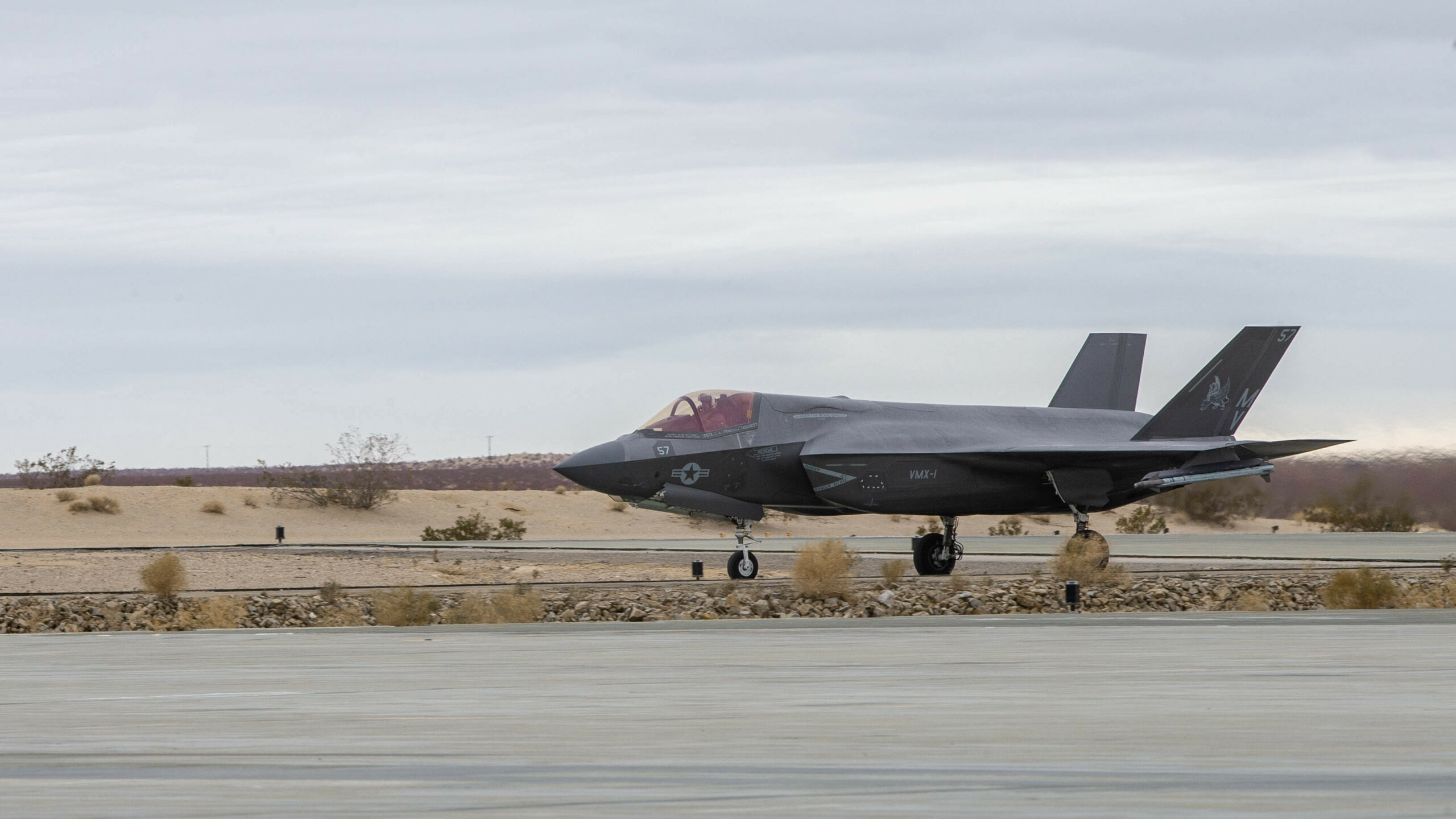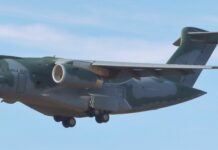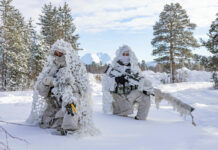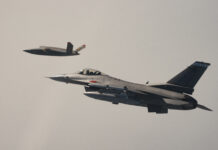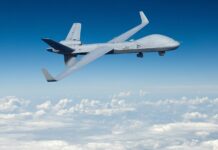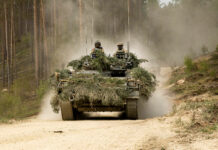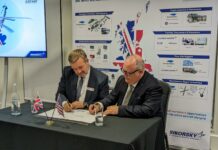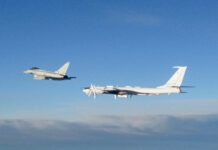The US Marine Corps (USMC) has furthered its experimentation with expeditionary advanced base operations (EABO) by landing an F-35B short-take-off/vertical landing (STOVL) Joint Strike Fighter on a disused highway in southern California.
The event, which took place in late July 2023 and was first reported by thedrive.com’s The War Zone website, was the latest in a series of test events known as ‘Obsidian Iceberg’ that seek to further improve the F-35B’s ‘island-hopping’ and austere airfield operations. It involved the USMC setting up an improvised forward arming and refuelling point using a section of the Old Pacific Coast Highway, where the F-35 landed, was refuelled and re-armed and then took off again.
The event, which was conducted by Marine Operational Test and Evaluation Squadron 1 (VMX-1), also involved a USMC MV-22 Osprey tilt-rotor delivering a torpedo to a US Navy MH-60R Seahawk helicopter.
Additionally, two UH-1Y helicopters were used to transport a low-altitude air defence team into the area armed with FIM-92 Stinger manportable air defence systems and then conduct armed overwatch, while a USAF MQ-9 Reaper unmanned aerial vehicle from 163rd Attack Wing surveilled the location from 15,000 ft.
The EABO concept involves low-signature, mobile, relatively low-cost capabilities operating in expeditionary and temporary locations. It is designed to mitigate a peer competitor’s anti-access/area denial strategy by creating a more survivable, resilient, and persistent forward-postured force. Marine aviation expeditionary advanced bases can be used to mount sea denial options and to expand the reach and lethality of US forces in the Pacific.

In many respects the F-35B is being used to restore a capability USMC aviation previously had with the now-retired AV-8B Harrier II vertical/short-take-off and landing (VSTOL) aircraft, which had in years past also exercised from the highway location.
Meanwhile, a report in Aviation Week noted that the Royal Air Force will also soon experiment with austere operations from highways. Citing RAF Air & Space Commander Air Marshal Harvey Smyth speaking at the Global Air and Space Chiefs Conference in London in mid-July, the report noted that the RAF will soon send both F-35Bs and Typhoons to Finland to gain experience with operations from Finnish highways.
The RAF was the first Western air force to mount austere operations with a VSTOL jet aircraft after the Harrier GR.1 entered service from 1969. The USMC procured the aircraft precisely because of this capability, with McDonnell Douglas and British Aerospace then co-developing the AV-8B Harrier II.
Peter Felstead


